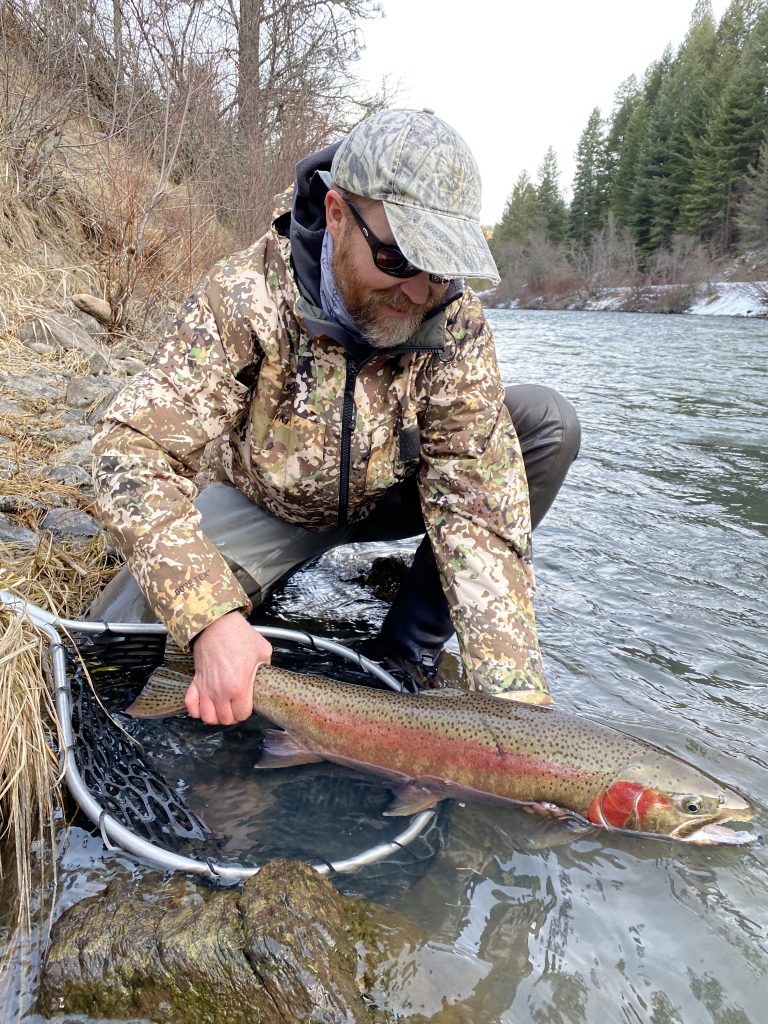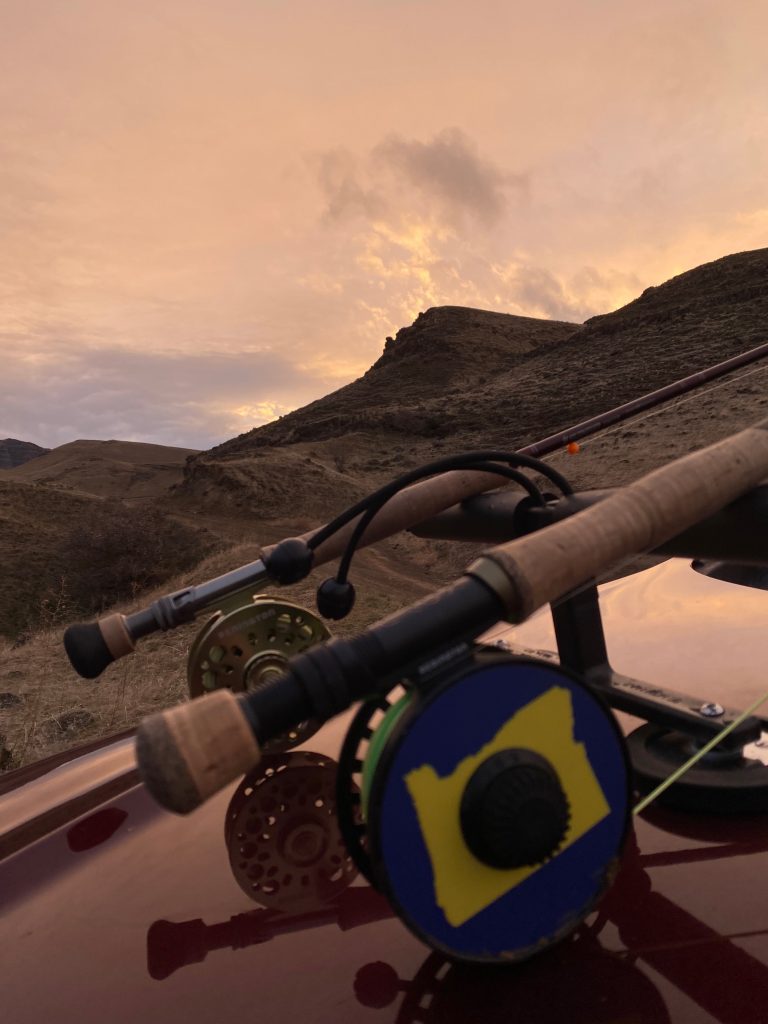On the Brink: Oregon’s Anadromous Fish
 If Oregon’s anadromous fish were a multi-billion-dollar corporation headed by a savvy and top-notch team of money-making Coho-king-and-queen-and-them-pins, unafraid of steely-eyed bottom lines, hard-set at keeping the resource and ecosystems thriving…
If Oregon’s anadromous fish were a multi-billion-dollar corporation headed by a savvy and top-notch team of money-making Coho-king-and-queen-and-them-pins, unafraid of steely-eyed bottom lines, hard-set at keeping the resource and ecosystems thriving…
If Oregon’s anadromous fish influenced local, state, national, and international politics with stylized PR media campaigns, jet-setting with the most powerful people in the world, fins in the deepest of pockets and on the most important of buttons…
If Oregon’s anadromous fish had a voice that competed with and at times outcompeted all other voices…
But I’m here to tell you, as if you didn’t already know, that Oregon’s anadromous fish are voiceless. I’m not talking the grassroots, I love to fish and will protect their habitats’ silence. Nor the current Patagonia-led campaign for Wild Fish and groups like Wild Steelhead Coalition, pushing for the survival of anadromous fish. Nor the Oregon Department of Fish and Wildlife’s reaction to low runs this fall with closures and thermal angling sanctuaries. All of these things have positive impacts. I’m talking the kind of voicelessness that can be attributed to the powerless.
While my guiding season was cut short on the Grande Ronde in early July due to drought, heat, and low water, and while I can seek shelter, air conditioning, and a cold frosty to take a break from the heat, our local anadromous smolts cannot. The less water in our rivers, the more quickly our rivers heat up. The less water in our rivers, the more sculpin and baitfish go belly up. The less water in our rivers, the more a fish population is crammed together. The less baitfish and sculpin, the less water, the more likely a smolt is to find itself living with a bull trout or rainbow trout or smallmouth or carp or pikeminnow or heron or osprey or otter or unknowing take and bake fisherperson as a neighbor.
And I’m talking the kind of voicelessness that can be attributed to continued habitat loss and degradation. Drought and extreme heat affects everyone and everything. Our local ranchers had to deliver water to cattle this summer. Haying seasons were tenuous; some local ranchers had to scramble to find hay. Lawns turned brown. Dust in plumes.
Locally, a few days after my guiding season was cut short, fire swept along the Grande Ronde River in the Elbow Fire. Stretches of Oregon’s rivers, especially in the Columbia and Snake River systems, with what water there was, were downright bath-watery. On top of local drought and heat, the North Pacific Ocean, the rearing ground for all of Oregon’s anadromous fish, continues to experience warming and ecological shifts along with over-fishing and over-rearing of hatchery fish by the U.S., Russia, and China.
 An anadromous fish’s power comes from many places. Its ability to migrate vast distances, venture from fresh to salt water, and return to the same place or deviate from place, to spawn and carry on. The aerodynamic. The muscle. The lightning. Its ability to capture the human imagination. Its ability to sustain ecosystems. Its ability to sustain and enrich lives like mine. But an anadromous fish’s power does not come from its voice.
An anadromous fish’s power comes from many places. Its ability to migrate vast distances, venture from fresh to salt water, and return to the same place or deviate from place, to spawn and carry on. The aerodynamic. The muscle. The lightning. Its ability to capture the human imagination. Its ability to sustain ecosystems. Its ability to sustain and enrich lives like mine. But an anadromous fish’s power does not come from its voice.
For better or worse, with the Columbia and Snake Rivers experiencing some of their worst returns of steelhead ever, it is time for us, as Oregonians, to give these fish and the ecosystems where we find them, a bigger voice. Rich Simms, a Wild Steelhead Coalition board member and Fly Fisherman’s 2017 Conservationist of the Year, offers us this piece of advice:
This isn’t about blaming others or pointing fingers, but a larger call for accountability from our agencies, elected leaders, and industry. We need everyone who cares about these incredible fish to start pounding on the tables.
I want to live in an Oregon where anadromous fish are one of the key pillars of life that holds all of our ecosystems, economies, and cultures, from farmland and agriculture to timber to tech, together. Without wild, self-sustaining populations of anadromous fish, we have everything to lose.











